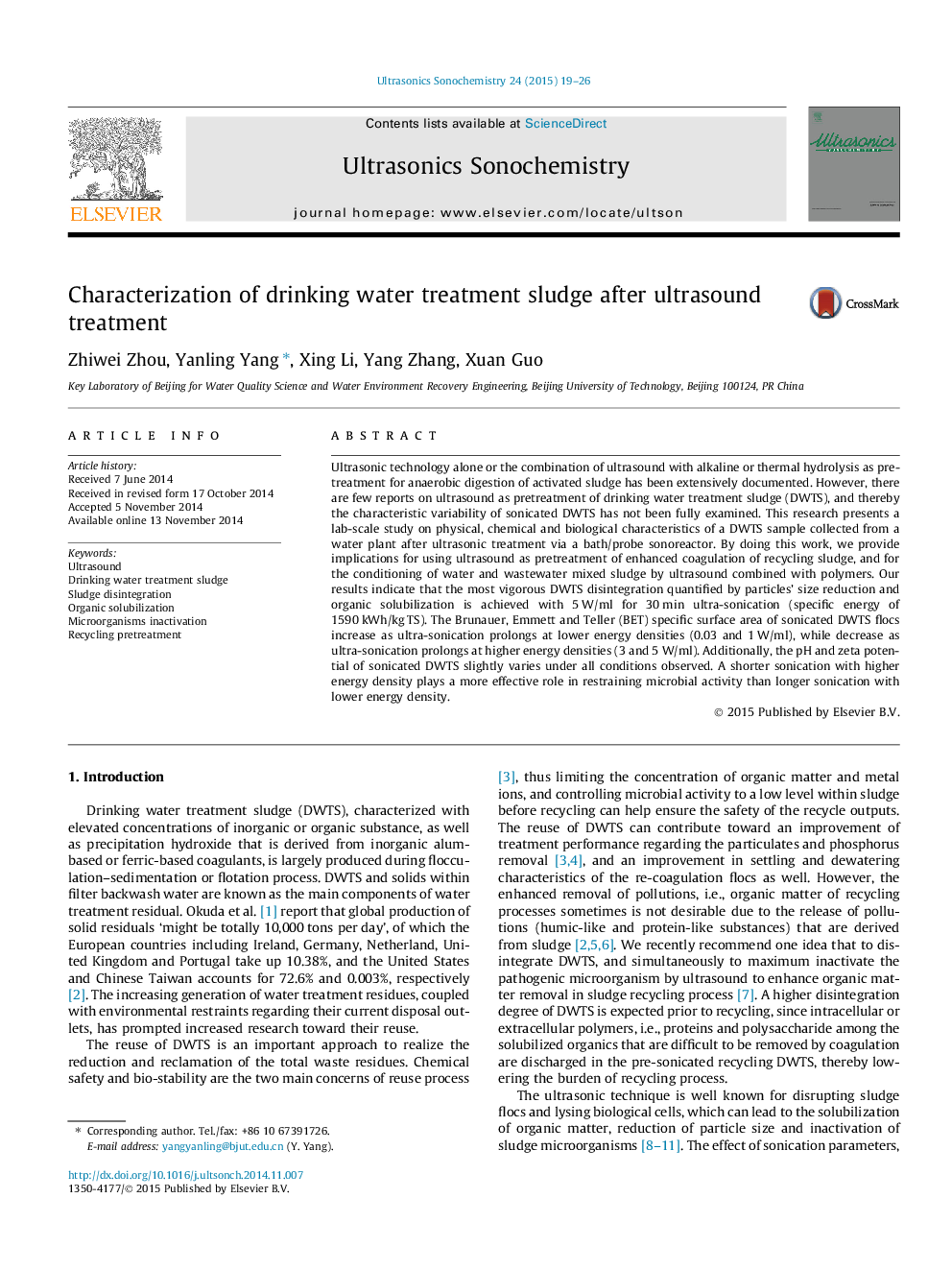| کد مقاله | کد نشریه | سال انتشار | مقاله انگلیسی | نسخه تمام متن |
|---|---|---|---|---|
| 1266691 | 1496880 | 2015 | 8 صفحه PDF | دانلود رایگان |
• Use the ultrasound to disintegrate DWTS to lower the burden of DWTS recycling process.
• Elucidate the physicochemical and biological characteristics of sonicated DWTS.
• Compare the characteristics variance of DWTS using bath and probe sonoreactors.
• The results can support implications for DWTS recycling process and DWTS conditioning.
Ultrasonic technology alone or the combination of ultrasound with alkaline or thermal hydrolysis as pretreatment for anaerobic digestion of activated sludge has been extensively documented. However, there are few reports on ultrasound as pretreatment of drinking water treatment sludge (DWTS), and thereby the characteristic variability of sonicated DWTS has not been fully examined. This research presents a lab-scale study on physical, chemical and biological characteristics of a DWTS sample collected from a water plant after ultrasonic treatment via a bath/probe sonoreactor. By doing this work, we provide implications for using ultrasound as pretreatment of enhanced coagulation of recycling sludge, and for the conditioning of water and wastewater mixed sludge by ultrasound combined with polymers. Our results indicate that the most vigorous DWTS disintegration quantified by particles’ size reduction and organic solubilization is achieved with 5 W/ml for 30 min ultra-sonication (specific energy of 1590 kWh/kg TS). The Brunauer, Emmett and Teller (BET) specific surface area of sonicated DWTS flocs increase as ultra-sonication prolongs at lower energy densities (0.03 and 1 W/ml), while decrease as ultra-sonication prolongs at higher energy densities (3 and 5 W/ml). Additionally, the pH and zeta potential of sonicated DWTS slightly varies under all conditions observed. A shorter sonication with higher energy density plays a more effective role in restraining microbial activity than longer sonication with lower energy density.
Journal: Ultrasonics Sonochemistry - Volume 24, May 2015, Pages 19–26
